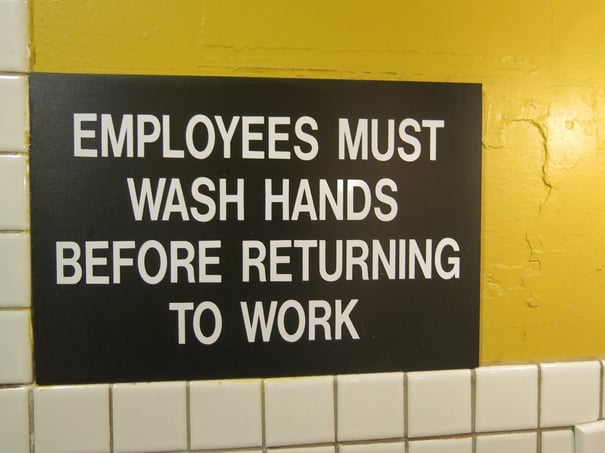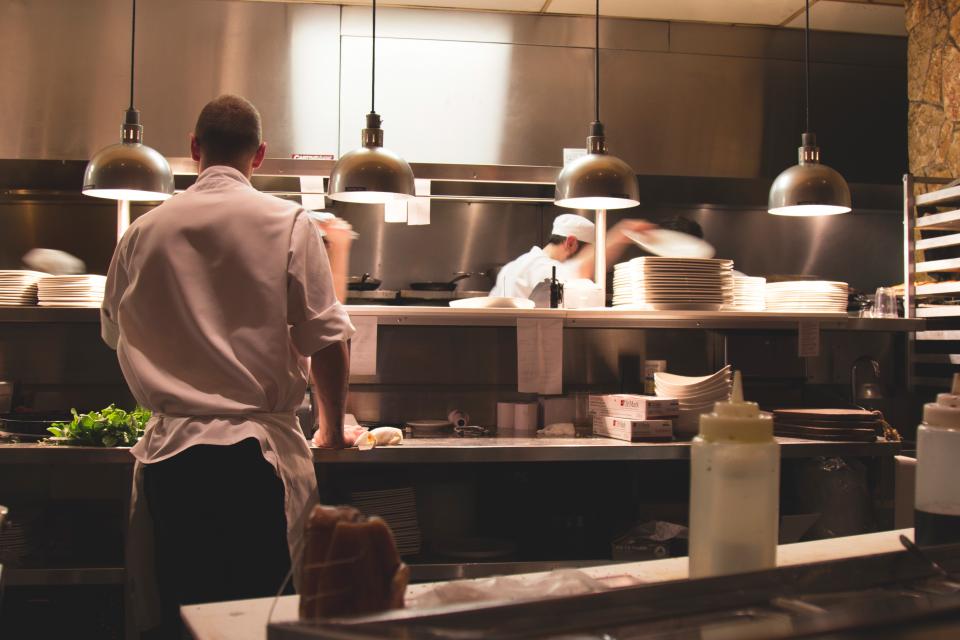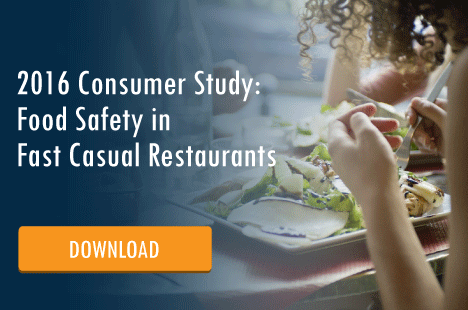Food safety is hard, thankless work. Restaurants get no recognition for practicing it, but one slip up and you can be in a world of hurt.
Here at TrendSource Trusted Insight, we wanted to know more about how consumers perceive food safety, how they react during and after a foodborne illness outbreak, and what (if anything) can make them give a restaurant another chance. So, we surveyed nearly 3,000 Fast Casual consumers about a variety of topics related to food safety and, while some of the results were expected—a whopping 98% said that hygiene and food safety are important or extremely important—we also found many enlightening trends and a few surprise insights.
Eating and Evaluating with Their Eyes
First and foremost: Diners trust what they can see and are suspicious of that which they cannot. A robust 81% of respondents indicated that seeing food prepared in an open kitchen format increases their trust in food quality and safety. This is profoundly important for existing restaurants reevaluating their design and aesthetic—and new ones establishing their own—as it indicates that an open kitchen connotes a trustworthy and safe product.
Something else customers like to see: employees wearing gloves; 86% felt that food was safe when avoiding contact with employees’ hands. Only 9% of respondents felt that food could be considered safe if it was prepared without gloves.
Not surprisingly then, only a little over half our respondents (53%) believe employees actually wash their hands behind closed doors, the other 47% not trusting the employees themselves or management to enforce the policy. And just because handwashing often takes place in private areas, customers remain vigilant as 82% would likely complain to management upon witnessing such unsanitary behavior.

Along those lines, customers also do not want to see unkempt employees practicing unclean habits. An emphatic 91% of respondents indicated that employee hygiene was an important factor of food safety, and 85% said it was important to their perception of the restaurant’s quality and safety. More interestingly 85% agreed that employees eating or drinking while preparing food is unsanitary and could put the customer at risk. Ensuring back and front-of-house employees are well-groomed and well-trained in hygiene silently communicates volumes to customers about your priorities and policies, shaping their perception of your establishment before you serve them their first bite.
Rebuilding Burned Bridges
Restaurants that find themselves embroiled in a food safety scare should note that, despite the fallout, all is not lost. Sixty-one percent of respondents indicated they would return to such a restaurant, and while 39% of respondents indicated that a foodborne illness outbreak would prevent them from returning that number isn’t as solid as it first appears (more to come on that later).
When they do return, almost half (49%) say their visit would only be after the problem had been properly identified and resolved, and preventative action had been taken to avoid further incidents. To the vast majority, that resolution takes the form of a Health Inspector’s seal of approval—87% indicated they would wait for such a declaration before returning.
Though, another way restaurants can hasten suspicious customers’ return is to incentivize them. Indeed, 55% of respondents said that vouchers/rewards for discounted/free food would draw them into giving the affected restaurant another go.
The Important Distinction Between Never and Never Ever, and Additional Factors
While 39% of respondents did indicate they would never return to a restaurant that had experienced a foodborne illness outbreak, that number is not absolute. When asked “Would your opinion ever be changed,” 53% of them indicated that it could. So for more than half of those who indicated they would never return, never is not as permanent a state as we think.
How do customers perceive different ethnic cuisines and their relationship to food safety? Which particular cuisine is most associated in customers’ minds with safety and which with risk? How does the frequency with which customers dine out shape their understanding of, and attention to, food safety? Do customers believe that organic, GMO-free, and/or anti-biotic free food is more or less likely to make them sick? Download the complete food safety study for answers to these and an array of other insights.


